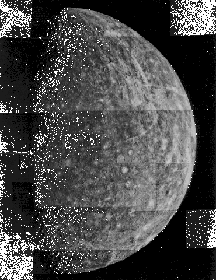This is an image of the surface of Mercury.
Click on image for full size
NASA
Surface of Mercury
Images of the surface of Mercury obtained by
Mariner 10
showed a planet covered with craters, looking very much like the
Earth's Moon. During its three passes by the planet, Mariner 10
took pictures of about half the surface of the planet, so we don't
know what the rest of the surface looks like. Mercury's
impact craters
were made early in the evolution of the solar system, nearly 4
billion years ago, by meteorites which hit the surface. The
relatively smooth plains between craters indicates that at one
point the surface was probably volcanic, as lava flows filled in
after the impacts of large objects. It appears that these plains
and heavily cratered regions are not uniformly scattered around
the surface. Instead, craters are concentrated on one part of the
planet while plains dominate another part.
Wrinkle ridges
or "rupes", a few km across and hundreds of km long, are also common
on the surface. These features, which can reach several km in height,
were probably created as the interior of the planet cooled and shrunk,
causing the surface to collapse in and form ridges. Major
surface features include ridges, plains, and numerous large craters, the
largest (about 800 mi or 1300 km across) named the
Caloris Basin.
You might also be interested in:

How did life evolve on Earth? The answer to this question can help us understand our past and prepare for our future. Although evolution provides credible and reliable answers, polls show that many people turn away from science, seeking other explanations with which they are more comfortable.
...more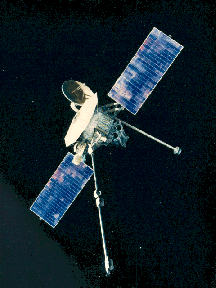
The Mariner 10 mission (USA) to Mercury was launched on November 3, 1973 and arrived at Mercury on March 29, 1974. The spacecraft made three separate passes by the planet, and obtained about 10,000 images
...more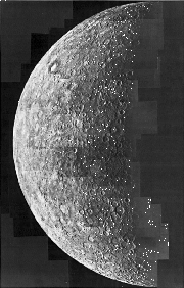
A wide variety of craters ranging in size from 100 meters to 1300 km across can be seen in the Mariner 10 images of Mercury's surface. These include: (1) craters in young terrain, (2) double craters,
...more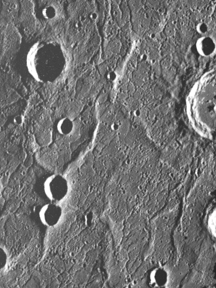
Wrinkle ridges on the surface of Mercury are thought to have been caused by the contraction of the surface following the cooling and contraction of the core of the planet. As the core cooled and therefore
...more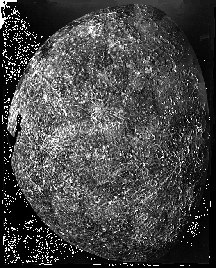
The surface of Mercury has numerous interesting features, including a variety of craters, ridges, and terrains ranging from heavily cratered to nearly crater free. These features, and their distribution
...more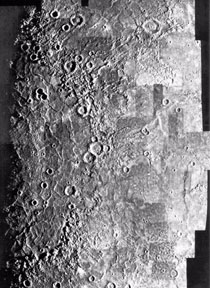
The Caloris Basin is the largest feature on the surface of Mercury. This crater was formed by the impact of a large meteorite near the end of the period of frequent impact cratering in the early solar
...more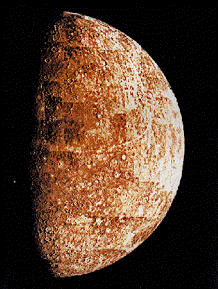
Mercury, the innermost planet of the solar system, is a little bigger than the Earth's Moon. The surface of the planet is covered with craters, like the Moon, but temperatures there can reach over 80
...more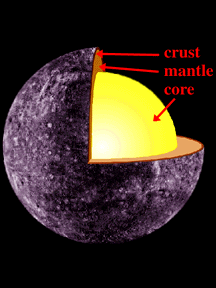
Mercury has a radius of 2439 km (1524 mi), and the metallic iron-nickel core is believed to make up about 75% of this distance. Measurements of the planet's magnetic field made by Mariner 10 as it flew
...more


